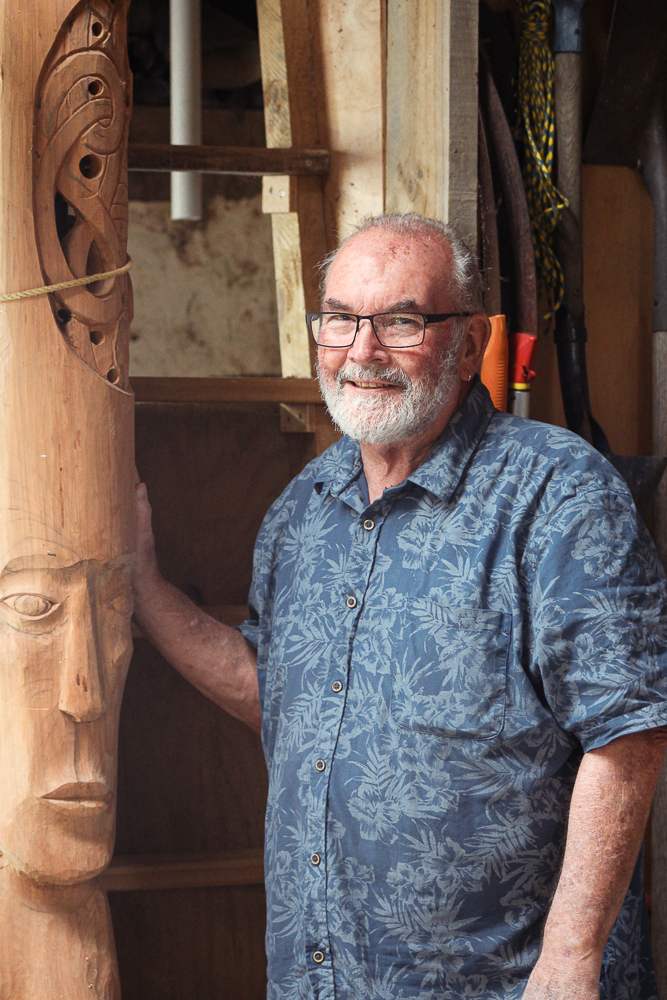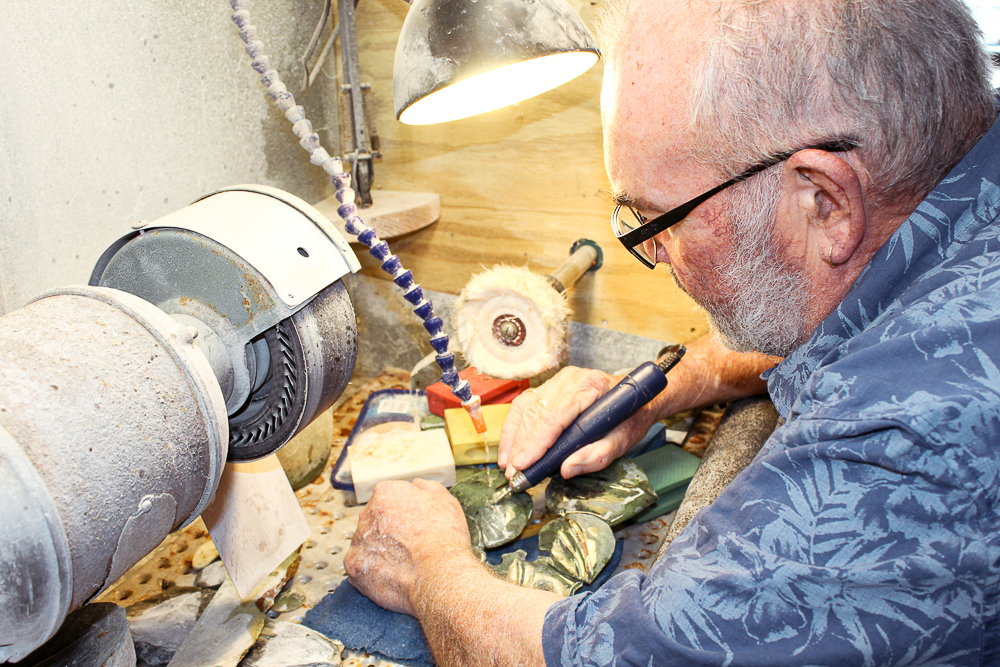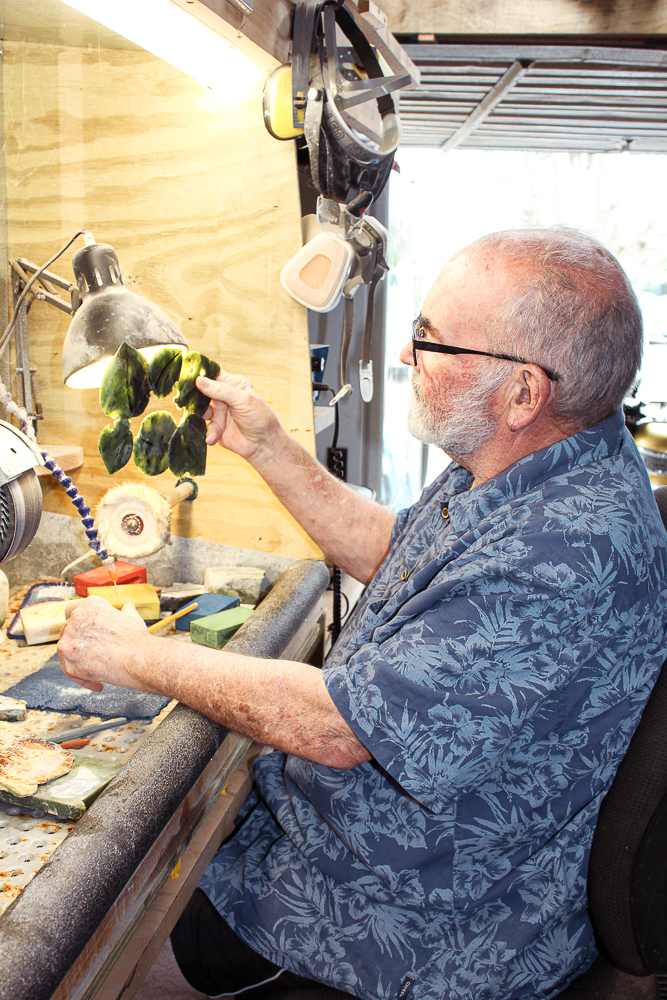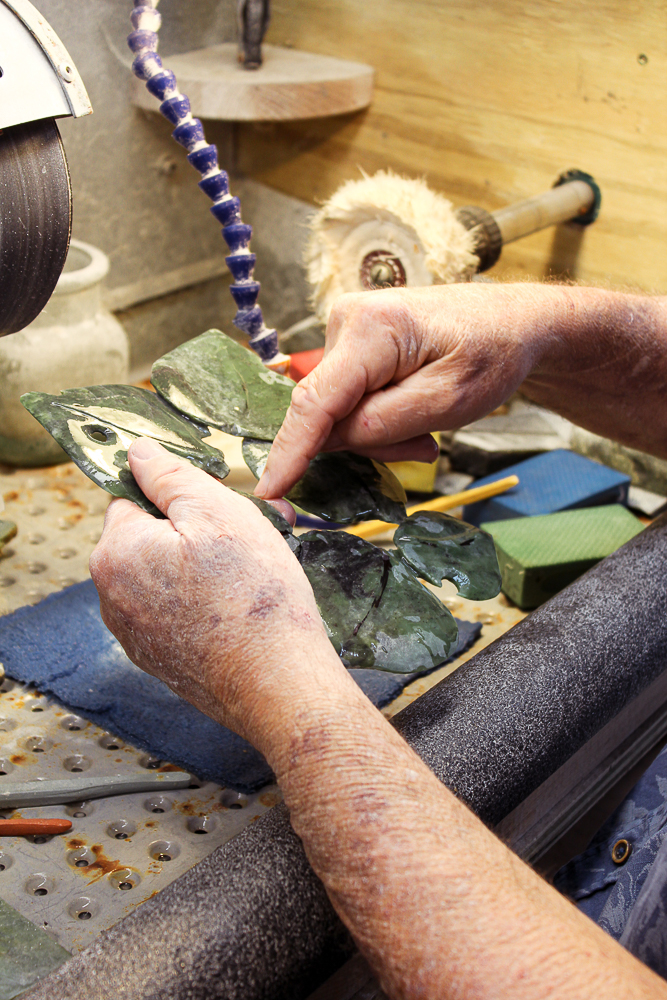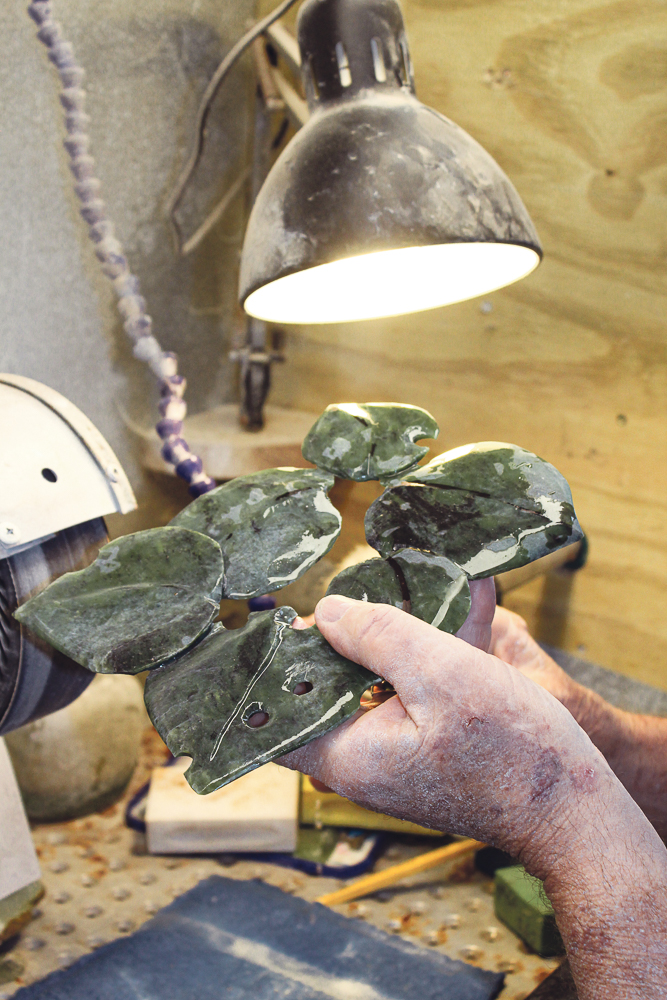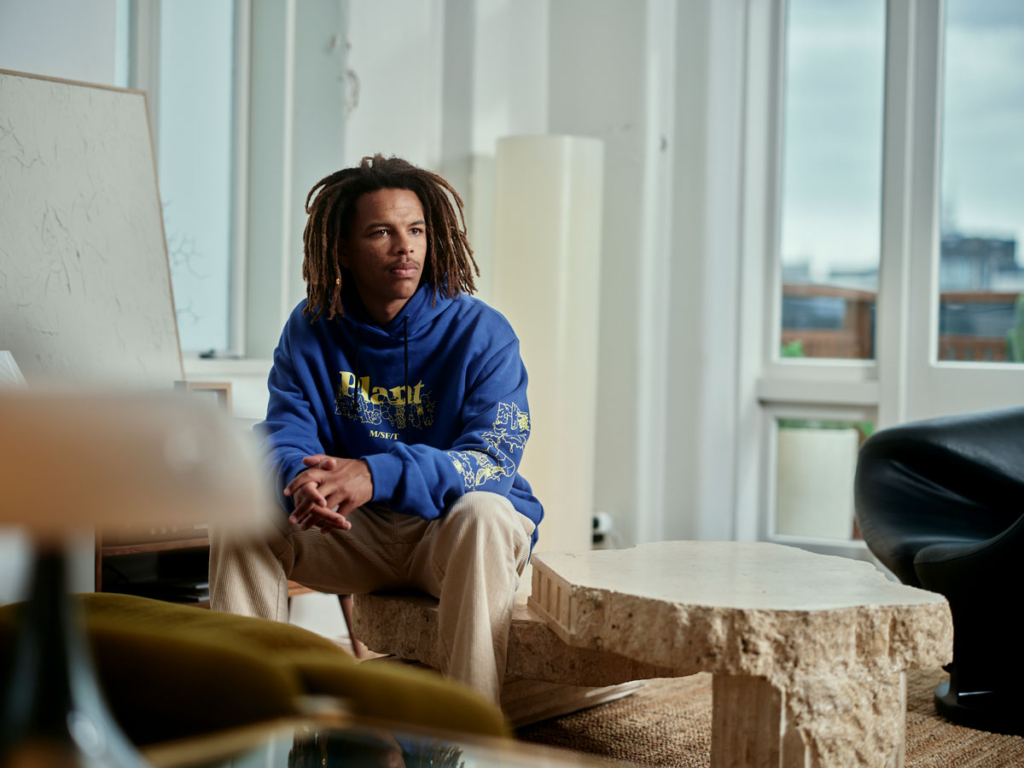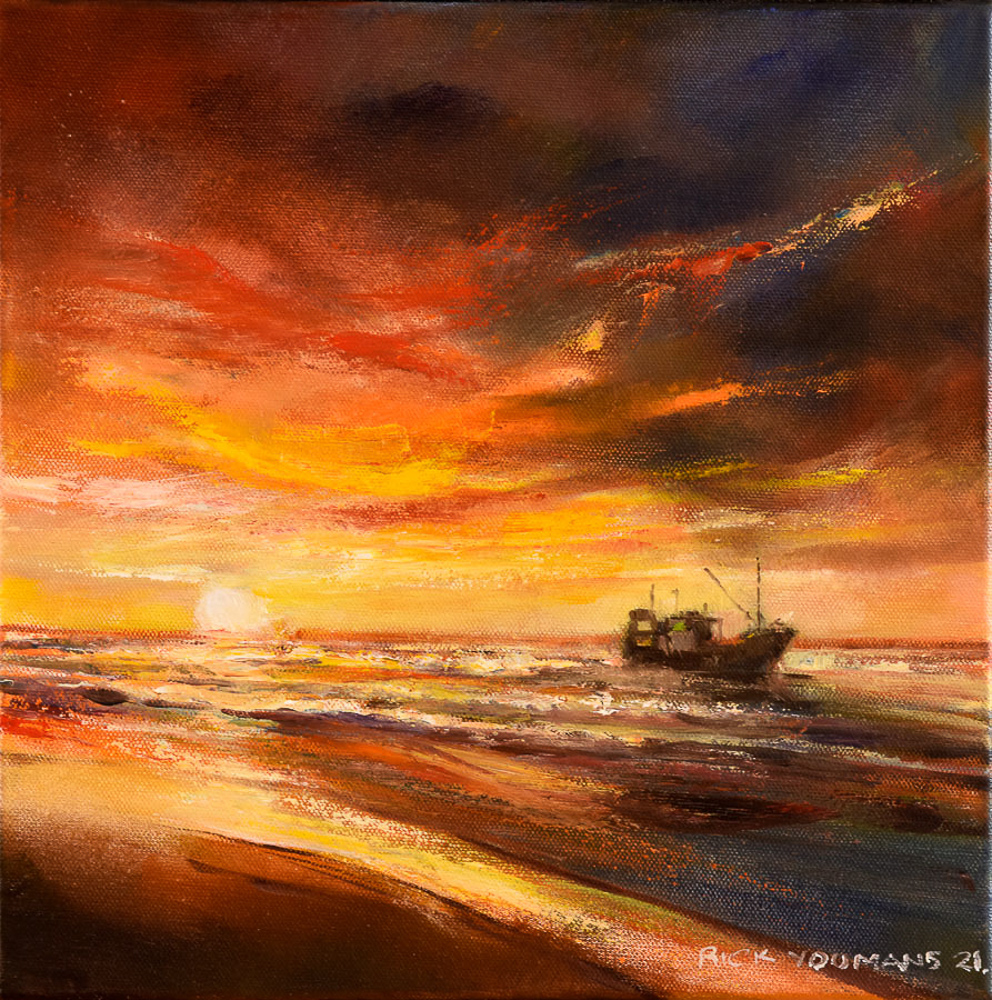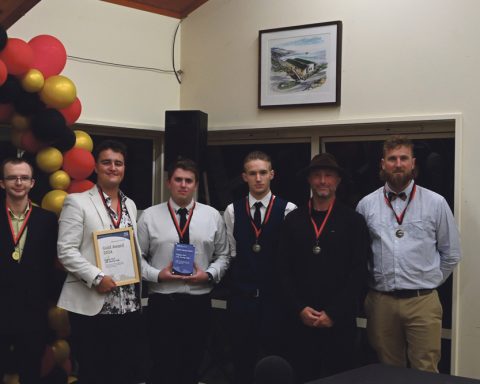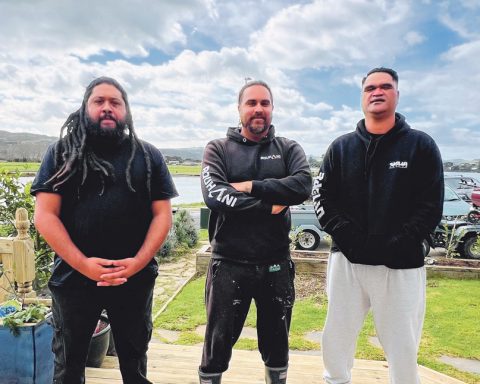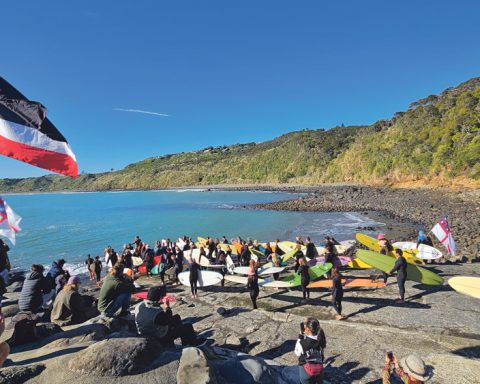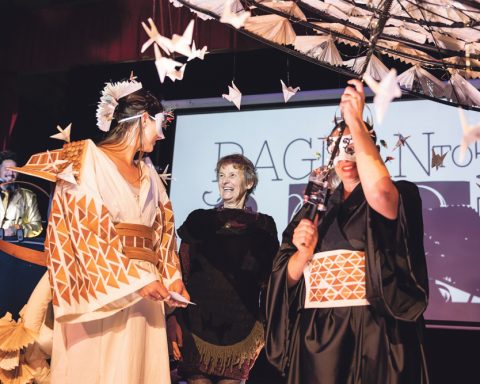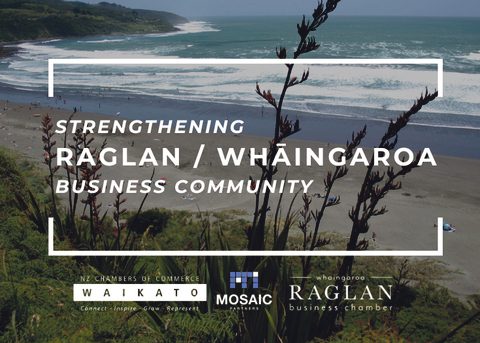After a long career in education, former Raglan Area School principal Malcolm Cox is now immersed in his lifelong passion for carving.
Working several days a week at Sands Carving Studio in Hamilton and the rest is spent at his home studio in Raglan where he melds carving together with storytelling.
“What I’m really looking for is people to come to me and saying this is what we’re thinking, this is what we’re trying to get made, this is what it’s for and really unpack the story so I can make something and work for them. They might come here for a pounamu bangle but they go away with an onewa piece because that’s their stone and suddenly there’s a whole lot more connection with that,” he says.
A big part of the storytelling for Malcolm is in honouring the past and the vast knowledge Māori had of carving and how to work the various materials.
“It’s a joy to learn from the past and those who came before us. I’m interested in what a we can learn, what we already know and how we can share that with people when they are buying a taonga (precious gift). It’s not about dollars and cents; it’s about what’s important and valuing things and understanding that all stone have mauri (life force) and they are all are a taonga.”
It’s the teacher in him that drives his passion for learning about the materials he uses, the stories behind the stone, and the traditional carving techniques that are being revived.
“I’m somebody who likes to share and learn and then share. We often get young people into the workshop and I get the job of tutoring because teaching has been an expertise of mine.”
He served as an apprentice carver for Alex Sands (Sands Carving Studio owner) and developed the techniques for carving pounamu but this piqued his interest in other stonework.
Whilst most people seem to prize pounamu, Malcolm’s passionate about working with the onewa (basalt) that was thrown from Karioi when it last erupted over two million years ago.
“We’ve placed a lot of prestige on pounamu and that’s fair enough but it wasn’t the working man’s stone. The vast majority of adzes and weapons were made out of onewa, pakoke (argilitte) or chert. Pounamu was relatively rare and always held in very high regard, therefore used for ceremonial a rather than practical work.”
Sourced from local farmers and the local quarry, who Malcolm says are happy to part with the rocks and boulders ‘littering their land’.
“I’ve got a couple of boulders from the quarry that will last me until I’m dead,” he laughs.
The retired educator was a youngster living in Auckland when he first picked up some rudimentary carving tools and took to a piece of wood.
He remembers being drawn to the carvings at the Auckland War Memorial Museum, and drew his inspiration from the pre-European examples of carving found there.
Rejected from the Māori Arts and Craft Centre when he was 17 because he couldn’t whakapapa (connect through his genealogy), Malcolm took to teaching.
Malcolm and his wife Marian met when they were both teaching in Tuatapere a small town in Southland.
Keen to be closer to Auckland, Malcolm got work at the Raglan Area School and they made Whaingaroa home over 30-years ago.
Taking his carving to the next level, Malcolm undertook a degree in Māori Visual Arts at Te Wānanga o Aotearoa in 2013 and says he was lucky enough to learn from some of New Zealand’s fines carvers – Mike Matchitt, the late John Bevan-Ford and the late Te Kuiti Stewart.
Malcolm retired in 2019 after serving for 15 years as the school’s principal and 45 years of teaching, now dedicates much of his time to carving.
Check out Malcolm’s work on Instagram @raglantaonga or to chat about having a bespoke item made contact him on 027 388 9421.
